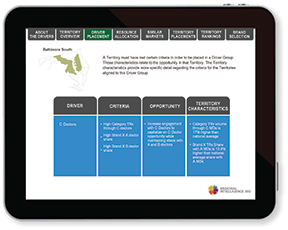Healthcare Regional Marketing.pdf
Healthcare Regional Marketing enjoyed strong results in 2014, seeing 27% growth in revenues. But what was particularly encouraging to senior management was that “half the growth was doing more business with our current manufacturers,” says Scott Weintraub, chief marketing officer and a cofounder of the agency, which has offices in Cincinnati and Lambertville, NJ.
 Brand teams who work with HRM tend to tell other brand teams about the agency’s method and results, Weintraub says. That kind of positive word of mouth can be invaluable in getting new business.
Brand teams who work with HRM tend to tell other brand teams about the agency’s method and results, Weintraub says. That kind of positive word of mouth can be invaluable in getting new business.
The gospel HRM brand managers preach is one of regional marketing. It’s a technique the agency founders developed while working for six years at Pfizer and brought with them when setting up their own shop seven years ago.
“For a third to half of our clients, we start off with an analysis project where we can look at what’s driving performance in each and every sales territory,” Weintraub explains. Then the agency groups similar territories together, clustering them for marketing plans tailored to their needs.
 “One-size-fits-all marketing is not the most effective way to go,” he continues. “It’s efficient but we can be more effective. We produce much better ROI than a national program.” Clients seem to agree. The agency is in its seventh year working with Pfizer and has expanded its brand work with Essilor USA and Janssen Biotech.
“One-size-fits-all marketing is not the most effective way to go,” he continues. “It’s efficient but we can be more effective. We produce much better ROI than a national program.” Clients seem to agree. The agency is in its seventh year working with Pfizer and has expanded its brand work with Essilor USA and Janssen Biotech.
Weintraub admits that the agency occasionally runs into resistance. “Our biggest challenge is everyone conceptually agrees that doing a marketing plan that’s more focused to market needs is likely more effective,” but they also see it as a lot more work, he says. “Their perception is if you do three marketing plans, it could mean three times the work”—something already thinly stretched pharma teams don’t want to take on.
On the work front, digital projects now comprise about 50% of the company’s portfolio—a figure that surprises Weintraub, who says he expected it to reach 75% by now. Client reluctance is holding back digital use in some instances.
HRM staffing rose from 35 to 40 employees in 2014. Lisa Klein joined the agency as VP, market intelligence. Internally, Doug Zinc, who had been a VP, was promoted last year to SVP and put in charge of daily operations.
The remaining months of 2015 should be interesting ones at HRM, with the agency finalizing plans to debut two new product offerings. In July, it will introduce its regional opportunity identifier, which will cost half the price of the company’s more robust existing regional analysis program. The new ROI will look at 100 variables in given markets instead of the 300 used in the existing analysis.
A second new product, planned for a July 1 rollout, is a regional content centralization app for iPads. “It’s basically putting all the regional content that a marketing and sales team would have in one central place so that it’s much easier to leverage with customers,” he says.
Weintraub also has a book set for release in July, Result: The Future of Pharmaceutical Marketing. It examines what he views as key trends in pharma marketing, regional marketing and digital marketing.
From the July 01, 2015 Issue of MM+M - Medical Marketing and Media








